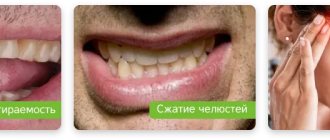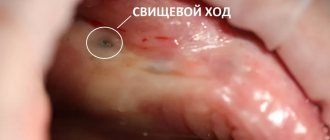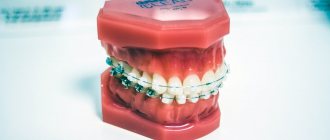Impairment or difficulty in swallowing (dysphagia) is a feeling of painful and unpleasant sensation behind the sternum, a “lump in the throat,” directly related to the process of swallowing and eating food, or provoked by stressful or traumatic situations.
Swallowing is a complex process and can be disrupted by a variety of factors. Sometimes these are age-related changes in the swallowing muscles that develop in older people. In older age, swallowing problems are relatively common. However, age-related dysphagia should not be accepted as a natural part of the aging process. There are certain treatments available.
Nervous throat
Every patient has the right to receive a full medical verdict if it is so important for him to calm down and stop beating himself up. But there are three signs by which a person is able to independently determine whether his swallowing process really has a connection with nerves, and not with organic diseases:
Upon waking up, the patient may not experience difficulty swallowing for some time. The brain needs at least 15 minutes to “remember” the current problems and get ready to repeat them.
Cancer and thyroid are, of course, no joke. But, oddly enough, they do not cause pharyngeal spasms during swallowing saliva. And when such problems begin, the diseases are already so obvious and accompanied by additional painful symptoms that it is impossible to doubt them.
If you get too carried away by something, you may not even notice how saliva has successfully passed along its route to the stomach several times. But as soon as the patient comes to his senses, he again cannot swallow.
Reasons for violation
Almost every person has had to deal with temporary difficulty swallowing, which occurs during severe excitement, fear or crying. But such a problem can arise for other reasons.
For example, a natural change in the function of the swallowing muscles occurs in old age. The problem may also arise from a complication following neck or head surgery. Problems with swallowing often occur due to excessive dryness in the mouth or the presence of ulcers in the mouth.
Other reasons for the development of pathology include:
- Neurological diseases.
- Obstruction of the esophagus and pharynx.
- Muscle dysfunction.
- Congenital diseases.
How is diagnosis carried out?
To determine the exact cause of pain when swallowing, you need to undergo a diagnosis from a gastroenterologist. To begin with, the doctor collects anamnesis, interviews the patient and performs palpation (physiological examination).
To check the wall of the esophagus and stomach, laboratory research methods are used:
- radiography;
- fibrogastroduodenoscopy;
- determination of gastric juice concentration;
- manometry;
- Ultrasound of the chest and stomach.
Patient examination methods are aimed at assessing motor function. If erosions, tumors or ulcers are found during diagnosis, a biopsy is prescribed. The resulting biopsy specimen (biomaterial) is sent for histological examination. This will help determine the nature of the tumors - malignant or benign.
What happens when you have a swallowing disorder?
The patient loses the ability to swallow only solid food, and in more severe cases, liquid and saliva.
The stomach contents flow back into the esophagus and throat. There is a feeling of a lump in the throat due to the fact that the acidic environment of the stomach enters the throat and burns the mucous membrane.
During swallowing, a feeling of lack of air appears.
After eating food, there is a feeling for some time as if it is stuck in the throat.
There is a sore throat and shortness of breath.
Clinical picture of pain
Additional manifestations of pain when swallowing foods can indicate the cause of the discomfort. However, signs appear already in the later stages. Therefore, you need to pay attention to the main additional symptoms accompanying pain:
- attacks of nausea;
- vomit;
- regurgitation of undigested food;
- heartburn;
- general malaise.
If there is a foreign body in the esophagus, a person becomes weak. The skin becomes pale due to internal trauma. Other signs of the disease include decreased appetite, weight loss and frequent bloating.
If a patient has a hernia, pain occurs when swallowing saliva. An unpleasant sensation spreads to the ear. To alleviate the condition, the body independently makes a muscle spasm, which causes belching or vomiting.
Symptoms and signs
General clinical picture:
- reverse throwing of the food bolus into the oral and nasal cavities;
- inability to swallow food (or this happens with effort);
- pain as food moves forward, including pain in the stomach;
- discomfort when eating food that irritates the esophageal mucosa (for example, hot dishes);
- feeling of suffocation;
- severe cough;
- significant separation of saliva;
- aspiration pneumonia due to the reflux of gastrointestinal contents into the airways;
- other signs indicating concomitant pathology that caused dysphagia (for example, decreased cough reflex, frequent choking after a stroke).
Why does there be a feeling of a foreign body in the throat?
Acute infections
The sensation of a foreign body is provoked by swelling, inflammation, accumulation of sputum, and plaque formation. It is detected in infectious diseases such as:
- ARVI.
The manifestation is insignificant, disturbing at the initial stage of the disease, complemented by weakness, weakness, moderate redness of the throat, general hyperthermia, and muscle pain. - Measles.
The symptom occurs with the onset of the first wave of fever and is more pronounced in children. The pharynx is hyperemic, the posterior wall of the pharynx is granular. The face is swollen. After 3-5 days, the condition improves and characteristic rashes form on the skin. - Diphtheria.
Accompanied by the formation of fibrinous plaque first, then a dense smooth coating. With widespread damage to the oropharynx, involvement of the larynx and trachea, breathing disorders and the development of diphtheria croup are possible. - Scarlet fever.
The throat is bright red, painful, sometimes there is involvement of the tonsils and enlargement of the cervical lymph nodes. A little later, the tongue and lips also become bright red, a pinpoint rash appears on the face and upper body, spreading to the limbs.
Inflammatory diseases of the ENT organs
In acute inflammation, the symptom does not have a clear localization, occurs suddenly, quickly reaches a significant degree of severity, and disappears after a few days. Chronic inflammatory processes are accompanied by periodic moderate or slight sensation of a foreign body, which is more disturbing during periods of exacerbation.
- Tonsillitis.
The tonsils are hyperemic, enlarged in volume, covered with superficial films, multiple small yellowish-white foci or loose plaque. Sore throat, general hyperthermia, and symptoms of intoxication are observed. With chronic tonsillitis in the acute phase, all symptoms are smoothed out. - Pharyngitis.
When examining the pharynx, swelling and diffuse hyperemia are revealed. The general condition remains normal, sometimes there is weakness and an increase in temperature to low-grade levels. In the chronic form, one part of the pharynx is predominantly affected: the oropharynx, nasopharynx or hypopharynx. - Laryngitis.
The patient complains of scratching, soreness, and tickling in the lower parts of the throat. The voice becomes hoarse; in severe cases, the patient speaks in a whisper. There is a paroxysmal dry cough. The symptom is more noticeable in phlegmonous and infiltrative forms. Chronic laryngitis is manifested by coughing, the need to periodically clear the throat, and rapid voice fatigue.
Laryngeal sore throat is accompanied by the same symptoms as acute laryngitis, but is characterized by a more severe course. The pain in the throat is so severe that patients refuse to eat and take a forced position.
Purulent processes
Abscesses in the throat area occur with sore throat, and less often result from rhinitis, pharyngitis, or sinusitis. Sometimes they develop with otitis media, mastoiditis, mumps, and are formed against the background of acute infections or carious teeth. The sensation of a foreign body has a clearer localization than in inflammatory pathologies, appears on the side or in the central part of the throat, and is accompanied by significant hyperthermia and severe intoxication. Detected under the following conditions:
- Peritonsillar abscess.
It manifests itself as sharp, rapidly intensifying pain when swallowing. The pain becomes tearing and radiates to the ear and lower jaw. There is a tilt of the head towards the affected area and a putrid odor from the mouth. Possible trismus. - Retropharyngeal abscess.
It is accompanied by extremely intense pain, forcing patients to refuse food. When the abscess is located in the upper part of the pharynx, nasal breathing disturbances and nasal sounds are observed; in the middle and lower parts - difficulty breathing and hoarseness. - Epiglottitis.
Signs of a purulent process are combined with breathing problems. The patient complains of pain in the lower part of the throat. Hoarseness and muffled voice, wheezing, cyanotic lips and nasolabial triangle, and tachycardia are detected.
Ludwig's angina is one of the most common purulent processes. The sensation of a foreign body appears when the pharynx is involved, accompanied by severe fever, swelling of the neck, breathing problems, loss of voice, and drooling.
Sensation of a foreign body in the throat
Traumatic injuries
The sensation of a foreign body in the throat may indicate the presence of a foreign object or injury caused by the object as it passes through the throat. The cause of the symptom is fish bones, crackers, fruit and berry seeds. Children sometimes swallow inedible objects with sharp edges, such as building blocks. With thermal and chemical burns, discomfort in the throat occurs due to swelling and damage to the mucous membrane.
Tumors
The symptom is included in the typical clinical picture observed with benign neoplasms of the pharynx and is combined with a sore throat, nasal voice, and difficulty in nasal breathing. Slowly builds up over a long period of time. It is detected with papillomas, fibromas, and hairy pharyngeal polyps. It is noted for angiomas, neuromas, and pharyngeal cysts. With benign neoplasia of the larynx, complaints of the sensation of a foreign object are less common, and voice changes prevail.
In patients with pharyngeal cancer, the sensation of a foreign body is the first symptom of the disease. Later, pain, choking, difficulty swallowing, and sensitivity disorders occur. Manifestations quickly progress, complemented by general signs of the oncological process - weight loss, weakness, intoxication. The symptom is also characteristic of laryngeal cancer, affecting the upper parts of the organ.
Allergy
The symptom is observed in allergic reactions accompanied by swelling of the throat. It appears suddenly. The patient is bothered by sneezing, nasal congestion, lacrimation, sore throat, itchy skin. In the spring-summer period, allergies are provoked by contact with plant pollen, throughout the year - with wool, dandruff, feathers of animals and birds, house dust, and food products. The most striking picture is observed with Quincke's edema.
Thyroid pathologies
The thyroid gland is located near the upper part of the trachea, its enlargement causes irritation of the receptors, causing the sensation of a foreign body. The symptom is detected in the following pathologies:
- Iodine deficiency conditions
: diffuse euthyroid goiter, nodular goiter. - Mainly hyperthyroid conditions
: diffuse toxic goiter, thyroiditis (subacute, autoimmune, others). - Benign and malignant tumors
: adenomas, cysts, lymphomas, thyroid cancer.
Digestive system diseases
Foreign body sensation is sometimes accompanied by GERD. Patients complain that they want to drink water or cough to get rid of a foreign object. The symptom is provoked by constant irritation of the receptors with acidic contents thrown into the upper parts of the digestive tract during reflux. A distinctive feature is the increase in discomfort when lying down. With dyskinesia of the esophagus, the symptom appears due to a violation of the passage of the food bolus due to a disorder in the motility of the organ.
Dental diseases
Patients with certain tongue pathologies complain of a feeling of a foreign body in the throat: black hairy tongue, papillomatous form of rhomboid glossitis. In the first case, there is a significant increase in taste buds in the posterior and middle thirds of the tongue, coloring the affected area in black and dark brown shades. With rhomboid glossitis, pale pink growths appear on the tongue.
The symptom accompanies benign and exophytic malignant tumors of the oral cavity if they are located on the root of the tongue or in the palate. In addition, the sensation of a foreign body occurs with the stylopharyngeal variant of stylohyoid syndrome.
Neurosis of the pharynx
Initially, the sensation of a coma (foreign body) in the throat was described as a typical symptom of hysteria. Currently, along with hysteria, the causes of pharyngeal neurosis include astheno-neurotic syndrome and severe stress. Pathology can also be observed in cervical osteochondrosis, intervertebral hernia, spondylolisthesis, and certain diseases of the nervous system (neoplastic tumors, stroke, multiple sclerosis).
Throat examination
What should you be wary of?
Typically, patients' complaints are related to the fact that in the morning their saliva is not as usual: thick, sticky or foamy.
In such cases, accompanying symptoms may occur:
- violation of taste perception;
- constant dry mouth and throat;
- feeling of persistent thirst;
- tingling sensation on the tongue;
- difficulty and pain when chewing and swallowing food;
- sore throat and hoarseness;
- cracks on the lips;
- rapid formation of plaque on teeth;
- inflammatory processes in the oral cavity and gums.
But self-examination is a subjective thing, therefore, if there is any suspicion of a serious malfunction in the body, you should contact specialists to conduct accurate laboratory tests. Doctors determine whether the consistency of saliva is normal using a viscometer. If he confirms that the patient really has too thick saliva in his mouth, the doctor will determine the cause of the defect and prescribe the necessary treatment.
Causes
The human esophagus consists of mucous, submucosal, muscular and adventitial membranes. Injury or dysfunction of one of these structures can cause severe pain, nausea and other unpleasant symptoms. Gastroenterologists identify 7 main factors that can lead to pain.
Reflux esophagitis
Pain may occur due to the patient having reflux esophagitis. This is an inflammatory process that is caused by the action of gastric juice on the mucous membrane of the esophageal tube. This problem arises in patients suffering from gastroesophageal reflux and functional disorders of the digestive system. In this case, the esophagus can hurt even at rest.
Important: Patients may also experience additional symptoms, which should definitely be taken into account. A person may suffer from heartburn, dysphagia and other signs of inflammation.
Peptic esophagitis
This disease causes pain even when swallowing liquids, soft foods and saliva. The nature of the pain syndrome and its intensification can be affected by the food taken and the position of the patient’s body. The pain is very persistent and is localized in the retrosternal region or in the area of the xiphoid process. Pain can radiate to other parts of the body:
- back;
- neck;
- upper part of the esophageal tube;
- rib cage;
- interscapular region;
- collarbone;
- jaw and more.
Important: The sensations are often confused with coronary pain. The difference is that pain in the esophagus with peptic esophagitis does not depend on physical activity and tension. Checking for heart pain is very simple. If after using nitroglycerin the pain in the esophagus does not subside, then the cause is another disorder.
Foreign bodies in the esophagus
In some cases, cartilage and bones of poultry and fish get stuck inside the esophagus. Also, quite often, surgeons have to remove coins, needles, nails, pins, buttons, paper clips and other small objects that have gotten inside from the esophagus.
- Pain when swallowing deeply, on the side of the neck, whoever had this, please come in!!!
If there is a foreign body inside, the patient experiences increased salivation, and pain in the chest area intensifies when swallowing saliva or liquid. The patient may feel a lump that creates discomfort in a certain part of the esophagus. Over time, symptoms such as fever, dysphagia, deterioration of the patient’s health and condition, and even purulent mediastinitis may occur.
Important: Over time, a foreign body can lead to complications, regardless of how long ago the object entered the esophagus and how long it remains motionless in it.
Burns
Burns of the esophagus occur in two cases. In the first, the cause is the accidental ingestion of caustic chemicals, alkalis and acids into the esophagus. In the second case, the reason is that the patient tried to commit suicide and committed suicide using caustic substances.
With burns of the esophagus, the patient experiences pain not only when swallowing, but also immediately after toxic substances enter the body. The pain is localized not only in the esophagus, but also in the larynx, oral cavity and stomach. The most dangerous thing is what complications a burn of the esophagus has.
Hernia
If the hernia is extensive, the pain may radiate to the spine. A clear sign of pain in the esophagus due to hernias is a weakening of the symptom in the upright position of the patient's torso and the absence of a reaction when taking nitroglycerin.
Diseases of the esophagus
Most often, pain in the esophagus is caused by tumor and neuromuscular diseases of the esophageal tube. In addition to the sensation of pain during swallowing, a person is tormented by sudden pain in the form of a “crisis”. The pain is very intense, and is characterized by the fact that it often radiates up the esophagus, into the back and neck. Such a crisis can last from one minute to several hours in a row.
With achalasia cardia, a crisis usually occurs once every 1-3 months. Pain that occurs when swallowing food or saliva occurs in almost every patient with this disease. Pain in the esophagus when swallowing usually has the following characteristics: acute, sharp pain of a cutting nature in the area of the xiphoid process. Characteristic features of such pain are also the feeling that some object is blocking the passage of food and the esophagus is full.
If a person has a tumor of the esophagus, discomfort when swallowing is rare. However, malignant neoplasms in some cases still lead to pain.
Damage to the esophagus
Damage to the esophagus can be internal or external. Internal, closed injuries are factors that affect the mucous membrane of the esophageal tube. External or open injuries occur from penetrating wounds to the chest or throat.
In addition to injury to the esophagus when swallowing foreign bodies, damage often manifests itself in bedsores of the walls. Also, damage that causes pain when swallowing in the esophagus often occurs, such as perforation of the walls of the esophageal tube. It occurs due to the following diseases:
- Why do my knees hurt after running? What to do if pain occurs when running - some effective tips
- tumors;
- chemical burns;
- peptic ulcer.
Important: Pain occurs spontaneously and for a variety of reasons when swallowing in the esophagus. The main thing is to determine what other concomitant symptoms the patient has. It is this factor that can often indicate the cause of the pain syndrome.
Which doctor should I contact?
If you have difficulty swallowing food and have a lump in your throat, see your doctor or pediatrician (for your child). Your general practitioner will perform an initial examination to rule out the most common causes of swallowing problems. Then, depending on the suspected cause of dysphagia, you may be referred for evaluation to the following specialists:
- an otolaryngologist (a specialist in diseases of the ear, nose and throat) - if the problem is in the oropharynx;
- a neurologist (a specialist in diseases of the nerves, brain and spinal cord) - if the problem is in the nervous regulation of swallowing;
- gastroenterologist (specialist in diseases of the digestive system) - if dysphagia is caused by diseases of the gastrointestinal tract;
- an oncologist (a specialist in the treatment of tumors) - in case of suspected tumor of the pharynx or esophagus.
Treatment
Pre-hospital assistance
Patients with signs of acute infections and inflammatory diseases of the ENT organs should refrain from consuming irritating mucous membranes, too cold and hot foods and drinks. It is recommended to take large amounts of warm liquid, gargle, and use topical medications. If signs of an allergy appear, you should immediately take an antiallergic drug.
Conservative therapy
Treatment of infections, inflammatory and allergic pathologies is carried out using the following methods:
- Local remedies
. Patients are prescribed antiseptic, anti-inflammatory, analgesic drugs that eliminate pain, swelling, and the sensation of a foreign body in the throat. - Antibiotics
. Required for bacterial diseases, not prescribed for viral infections. Until the results of microbiological analysis are obtained, a broad-spectrum antibiotic is used; subsequently, the drug is replaced taking into account the sensitivity of the pathogen. - Antiallergic drugs
. Allergy sufferers are prescribed antihistamines and mast cell membrane stabilizers. - Physiotherapeutic methods
. Drug therapy is supplemented with UHF, inhalations, ultraviolet irradiation, medicinal electrophoresis, and other procedures.
With a rapid increase in swelling of the throat and larynx with the development of asphyxia, emergency tracheal intubation is necessary. Patients with GERD are prescribed a special diet, antacids, proton pump inhibitors, and H2-histamine blockers. For patients with esophageal dyskinesia, fractional meals, nitrates, anticholinergics, and calcium channel blockers are recommended. For hyperthyroidism, thyreostatics are effective. For pharyngeal neurosis, combined techniques are used, including psychotherapy and pharmacotherapy.
Complications with the development of dysphagia
Dysphagia is a very dangerous disorder that can provoke the development of a number of dangerous complications.
The main types of complications that can be encountered if treatment is not started on time:
- Weight loss, which can reach catastrophic proportions. The patient cannot eat, the body does not receive the necessary nutrition and is exhausted.
- With neurological disorders, food often enters the nasopharynx, causing asphyxia. For such a patient, every meal is a risk of suffocation.
- Disturbance and difficulty breathing.
- Development of inflammatory processes of the esophagus.
- Development of pneumonia.
- Dehydration of the body.
Many diseases develop simultaneously with dysphagia, either as the cause of its occurrence or as a consequence of its damage.
Treatment or what to do when it is difficult to swallow
If the symptom is caused by oropharyngeal dysphagia, then in this case it is necessary to look for methods of treating neurological diseases that are difficult to treat. Therapy consists of changing the diet, teaching the patient a new way of swallowing food, and feeding through a tube.
What to do if it’s hard to swallow, but your throat doesn’t hurt:
- If the cause is the endocrine system, then a course of therapy consisting of iodine-containing drugs may be prescribed;
- If a mucous infection is affected, it is necessary to be examined by an ENT specialist, who will prescribe additional examinations of a throat smear that will help determine the causative agent of the disease.
- When a throat problem is associated with a muscle disorder, a course of treatment, procedures, or massage are prescribed;
- Esophagus problem. The cause of compression of the esophagus may be a change in the structure of the aorta and glands. In this case, the gastroenterologist will prescribe a fibrogastroduodenoscopy procedure. Based on the results of stomach probing, the doctor will be able to prescribe a course of treatment;
- A psychologist can eliminate emotional disorders. If the reasons are more serious and there is a fact of a psychiatric illness, consultation with a psychiatrist is necessary.
Related posts:
- Ingrown toenails on both big toes. How I overcame the disease after 12 years of suffering. Ingrown toenail...the mere mention of this seemingly harmless ailment prompts...
- You don’t take the city as a seat, or what a sedentary lifestyle can lead to At the beginning of the last century, it was rare to see something falling out…
- Signs You're Eating Too Much Sugar Many people are unaware of their sugar addiction. Sugar…










